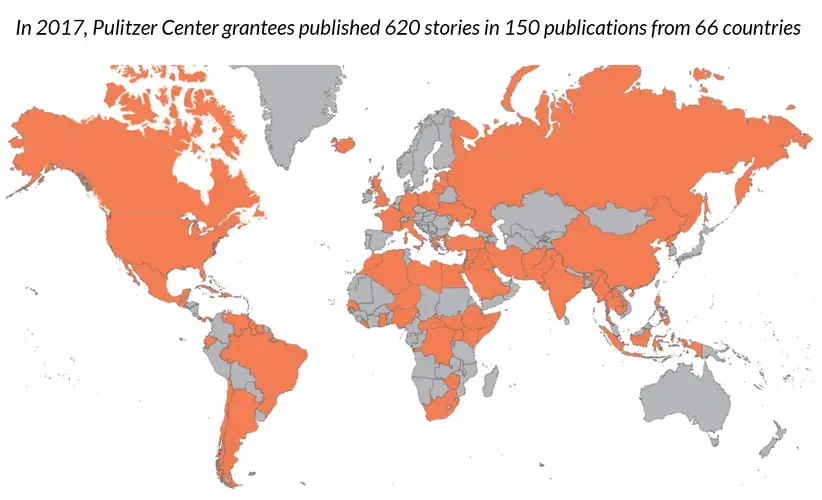Pulitzer Center Update February 6, 2018
Pulitzer Center 2017 Annual Report

An Associated Press exposé of rape and massacre in the Rohingya villages of Myanmar. A Los Angeles Times report on China’s growing influence across Africa. A six-part series for PBS NewsHour on Putin’s Russia. The New Yorker’s inside look at life in Pyongyang. A yearlong multimedia project with TIME tracking the lives of three Syrian refugee families in Europe.
These stories are a reminder of the astonishing range of work made possible with Pulitzer Center support in 2017—and a reminder, also, that beyond the circus of current American politics there is a world in flux, a world that we ignore at our peril.
New York Times journalist Nicholas Kristof says that his columns on President Trump average twice the readership online as those on foreign affairs—proof that “Trump sells,” he writes, “and overseas news doesn’t.”
That truth doesn’t make overseas news less important. It does mean we have to think harder about how to reach the broadest possible audiences on the issues that affect us all.

For the Pulitzer Center that means making our journalism as compelling as we can, through brilliant storytelling, photography, and videography of the sort you see highlighted in this report and video overview. It means ensuring that the journalists we support are as diverse as the world we hope to explain and engage.
It also means finding audiences where they are—funding projects with The Des Moines Register on Iowa’s unique relationship with China, for example, or with The Texas Tribune (and ProPublica) on the mismanagement of a 700-mile fence that is the precursor of Trump’s “beautiful wall.”
Just as important are the hundreds of schools and universities that use Pulitzer journalism as the launch point for discussion and debate, engaging students on the trends and policies that will determine their future.
In 2017 Pulitzer Center journalists participated in more than 250 events at 45 universities and colleges. We sent 37 students to report from 27 countries. We reached 80,000 secondary and middle school students in person—and tens of thousands more through online curricular resources that are freely available to educators everywhere.
At the Science Leadership Academy, a magnet public high school in inner-city Philadelphia, a Muslim student asked how could she be certain of her family’s safety in Donald Trump’s America. At Nerinx Hall, a Catholic girls’ high school in suburban St. Louis, a student said we could not count on government alone to change the world.
“It starts with us,” she said. “We shouldn’t stop just because someone else disagrees with us. We should continue to fight for what we believe in.”
On stage at these two Pulitzer Center events, listening intently, were two of the most prominent foreign-policy leaders of our time—former Secretary of State Madeleine Albright and former National Security Advisor Stephen J. Hadley. Their tour of our partner schools and universities was set against the backdrop of the reporting we’ve sponsored on the Middle East. It also spoke to our larger purpose, of fostering civil discourse in an uncivil time.
“The genius of America is that it reinvents itself, after periods of turmoil and discussion,” Hadley told the students in Philadelphia. “We’re in one of those periods of turmoil now. But there’s a possibility that Americans talking with one another, taking on these issues, will be able to reinvent this country.”
That’s our mission—and it’s your support that makes it possible. Won’t you join us today? Together we can change the world.
All best,
Jon Sawyer
Executive Director
See the full 2017 Annual Report
